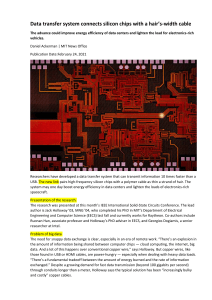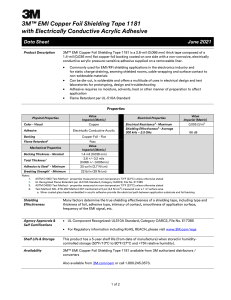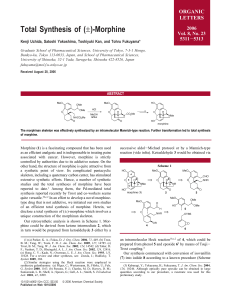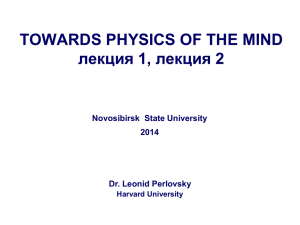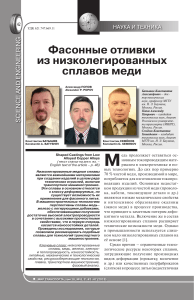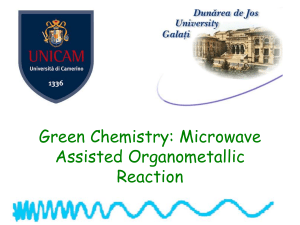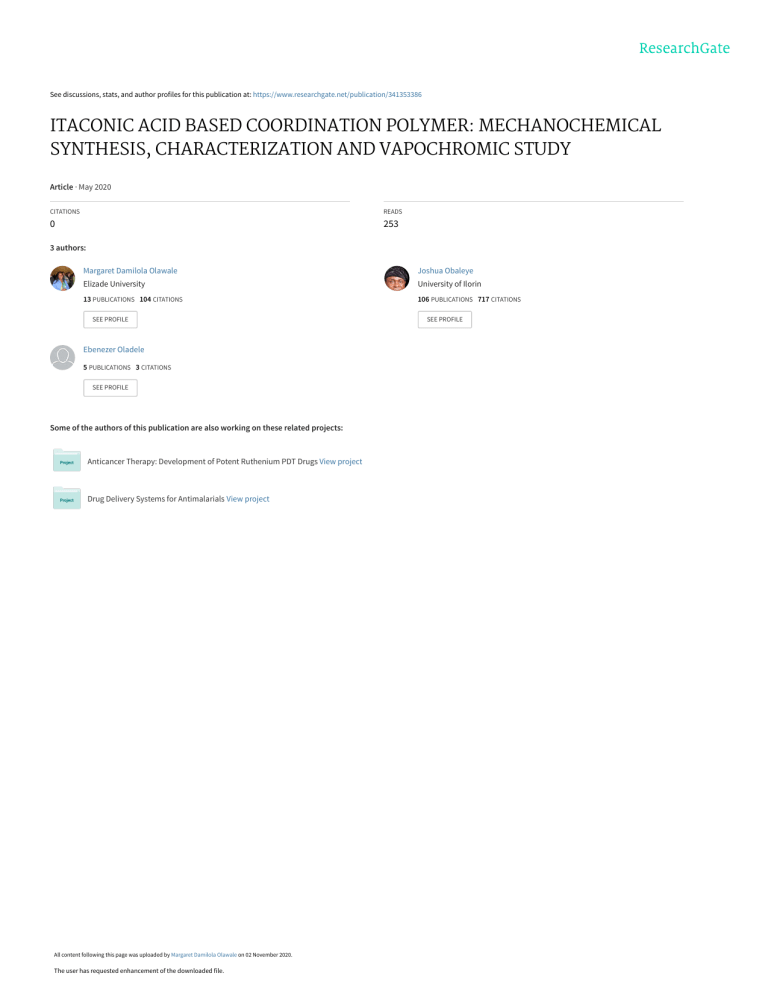
See discussions, stats, and author profiles for this publication at: https://www.researchgate.net/publication/341353386 ITACONIC ACID BASED COORDINATION POLYMER: MECHANOCHEMICAL SYNTHESIS, CHARACTERIZATION AND VAPOCHROMIC STUDY Article · May 2020 CITATIONS READS 0 253 3 authors: Margaret Damilola Olawale Joshua Obaleye Elizade University University of Ilorin 13 PUBLICATIONS 104 CITATIONS 106 PUBLICATIONS 717 CITATIONS SEE PROFILE Ebenezer Oladele 5 PUBLICATIONS 3 CITATIONS SEE PROFILE Some of the authors of this publication are also working on these related projects: Anticancer Therapy: Development of Potent Ruthenium PDT Drugs View project Drug Delivery Systems for Antimalarials View project All content following this page was uploaded by Margaret Damilola Olawale on 02 November 2020. The user has requested enhancement of the downloaded file. SEE PROFILE Nigerian Research Journal of Chemical Sciences (ISSN: 2682-6054) Volume 8, Issue 1, 2020 ITACONIC ACID BASED COORDINATION POLYMER: MECHANOCHEMICAL SYNTHESIS, CHARACTERIZATION AND VAPOCHROMIC STUDY *a a Margaret D. Olawale, bJoshua A. Obaleye, cEbenezer O. Oladele Department of Physical and Chemical Sciences, Elizade University, Ilara-Mokin, Ondo State, Nigeria b Department of Chemistry, University of Ilorin, Ilorin, Kwara State, Nigeria c Department of Chemical Sciences, Joseph Ayo Babalola University, Ikeji Arakeji, Osun state Nigeria. *Corresponding Author: olawalemargaret@gmail.com ABSTRACT Itaconic acid based coordination polymer (CP) was synthesized through a mechanochemical reaction between itaconic acid ligand and copper (II) salt. The [Cu(Itac) 2] CP was characterized by elemental analysis, Infrared spectroscopy, UV-Visible spectrophotometry and powder x-ray diffractometric analysis which confirmed its synthesis. In the application of [Cu(Itac)2], vapochromic behavior was carried out with different solvents vapour. Result revealed methanol having the highest sorption values of 1.44 moles. Also, the adsorption of the solvents vapour on [Cu(Itac)2] increased in the order of methanol > DMF > ethanol > acetone > isopropanol > benzene > toluene. The polarity of the solvents, solvent sizes and the unique affinity of [Cu(Itac)2] CP to some solvents may account for trend observed in rate of solvents uptake. These results indicate that [Cu(Itac)2] could be used to remove unwanted solvent vapour from contaminated air due to their reasonably large surface area. Keywords: Coordination polymer, Itaconic acid, IR, UV-Visible, vapochromic INTRODUCTION Coordination polymers (CPs) are essentially applicable in sorption study [1-4]. CPs is an excellent hybrid complex of structural interaction between a metal and an organic compound that may be ditopic or polytopic carboxylates architecturally yielding robust crystalline structure that is 50 percent void internally [4-6] exceeding the volume found in traditional zeolites and carbons http://www.unn.edu.ng/nigerian-research-journal-of-chemical-sciences/ 280 Margaret D. Olawale, Joshua A. Obaleye, Ebenezer O. Oladele: Itaconic Acid Based Coordination Polymer: Mechanochemical Synthesis, Characterization and Vapochromic Study [7-8]. CPs present permanent, extensive and multiplicity in terms of pore than any traditional porous materials making them comfortable and convenient for sorption properties [9-12]. An additional uniqueness of CP is that of hydrophobicity of the CPs pores that can be increased by adding aliphatic groups to the organic components of the CPs [13-16], which influences the tenability of the pore sizes from Armstrong (Å) to nanometers (nm) by controlling the organic ligand [9, 17]. Methylenesuccinic Acid, commonly known as itaconic acid is a white, organic, unsaturated dicarboxylic ligand with five carbons that is ready to complex with metals through its deprotonated oxygen of the carboxylates [18]. The double bond of its methylene group gives rises to the self-polymeric nature of the organic acid yielding polyitaconic acid [18]. Thus, itaconic acid is known industrially as a precursor for plastic polymer synthesis such as resins, lattices, and fibers [18-19]. Itaconic acid is a weak acid and stabilizes at acidic, neutral and midbasic solvents at a moderate temperature. It is extremely soluble in water and its solubility in alcohol decreases in the order of methanol, followed by propan-2-ol and finally propanol [2022]. This research work reports the mechanochemical synthesis of itaconic acid based CP and to investigate the potential functionality of the synthesized itaconic acid based CP towards mop up of toxic gases released by the industrial activity. EXPERIMENTAL Materials and Physical Measurement All chemicals and solvents used for this research were purchased from Sigma Aldrich and used without any further purification. Melting point determination was carried out using WRS-1B digital melting point apparatus. The elemental analysis was performed on a Perkin-Elmer CHN Analyzer 2400 series II. The IR spectra were recorded on SHIMADZU scientific model FTIR 8400s Spectrophometer. Powder XRD analysis were measured on a Bruker D8 Advance X-ray diffractometer operating in a Da Vinci geometry equipped with Lynxeye detector using a CuKαradiation (λ = 1.5406 Å). http://www.unn.edu.ng/nigerian-research-journal-of-chemical-sciences/ 281 Margaret D. Olawale, Joshua A. Obaleye, Ebenezer O. Oladele: Itaconic Acid Based Coordination Polymer: Mechanochemical Synthesis, Characterization and Vapochromic Study Solvent Free synthesis of Copper -itaconate [Cu (Itac)2.H2O] About 1 mmol Copper acetate monohydrate (0.200 g) and 2 mmol Itaconic acid (0.260 g) were ground separately for 5 minutes. Then, they were mixed and shaken overnight to remove the glacial acetic acid and water molecule inside the pores of [Cu (Itac)2.H2O]. The equation of reaction is shown in Scheme 2.1: Cu(OAc)2.H2O(aq) + Itac(aq) Direct Mixing Cu(Itac)2.H2O(S) 150 0C/ 6 Hrs Scheme 2.1: Equation of reaction for synthesis of [Cu(Itac)2].H2O Yield: 85 %, Anal. Calcd M. wt.= 323.74g/mol, M. pt. = 374 0C, Anal.(Calcd) % for (C10H10O9Cu): C, 37.02 (37.07); H, 3.11 (3.08); IR (KBr,cm-1): 1720, 1250, 1650, 2870, 3610. Vapochromic studies The method described by Eduardo et al. [11] was adopted. The synthesized CPs were activated in an oven in order to leave the pore empty of water and glacial acetic acid. The activated CPs were then placed in small open glass vials. The small glass vials containing the activated CPs were placed in a larger vial containing each of the volatile oxygen donor solvent (methanol, ethanol, dimethyl formamide, isopropanol, benzene, toluene, and acetone). The larger containers were then tightly closed for 24 hours. Change in colours was observed after 24 hours and vapochromic properties were monitored by gravimetry and by taking the FT- IR spectrum before and after exposure of the CPs. http://www.unn.edu.ng/nigerian-research-journal-of-chemical-sciences/ 282 Margaret D. Olawale, Joshua A. Obaleye, Ebenezer O. Oladele: Itaconic Acid Based Coordination Polymer: Mechanochemical Synthesis, Characterization and Vapochromic Study Figure 1: Structure of Copper Itaconate Coordination Polymer RESULTS AND DISCUSSION The melting point of copper itaconate CP (374 °C) was distinctly different from its ligand (164 °C). The CP powder is blue. The IR comparison of the itaconic acid and that of the copper itaconate CP indicated coordination of the ligand to the metal. The molecular weight of copper itaconate CP shows clear difference when compared to the weights of the starting reactants. The elemental analyses for C, H, N were also in consistent with the formula unit of the copper itaconate CP if compared with its theoretically calculated values. Figure 1 shows the structure of the copper itaconate CP. Infrared Spectroscopy Infrared spectra of copper itaconate have been studied in the 4000–400 cm−1 region. Comparison of FT-IR data of copper itaconate with its ligand revealed that the spectra are different, signifying formation of new compound. The IR spectroscopy data of the copper itaconate and its ligand confirm coordination of the itaconic ligand to the copper ion through carboxylate oxygen resulting into tetrahedral geometrical shape. The absorption band in the 3610 cm−1 assigns to νOH originating from coordination of water molecule to the copper itaconate. The IR frequencies of ν(COOH) that is completely absent in copper itaconate reveal deprotonation of the carboxylate ligand and coordination to the metal ion. νsym (COO -) bands formed in copper itacoante also confirm deprotonation and complexation. The absorption bands of the ν(C=O) that http://www.unn.edu.ng/nigerian-research-journal-of-chemical-sciences/ 283 Margaret D. Olawale, Joshua A. Obaleye, Ebenezer O. Oladele: Itaconic Acid Based Coordination Polymer: Mechanochemical Synthesis, Characterization and Vapochromic Study appeared in itaconic acid at 1698 cm−1 was noticed to have been shifted to 1720 cm−1, which also clearly specifies the coordination of the metal to itaconate. The ν(C-O) stretching band which appeared at1243 cm−1 in the ligand was shifted to 1250 cm−1 in copper itaconate due to complexation. The ν(M-O) band appeared as new IR band at 520 confirming coordination. Table 1: Selected FT-IR absorption band (cm -1) for Itaconic acid and copper itaconate Assignment νOH (H2O) νCOOH νas, νs COOνC-O νC=O νC=C νM-O Itaconic acid 1701 1243 1698 1645 - Copper Itaconate 3610 1530, 1397 1250 1720 1650 520 UV-Visible Spectroscopy The UV- visible spectroscopy data of ligand and copper itaconate CP are shown in table 2. The ligand has two bands at 228 nm and 359 nm which are assigned to π-π* and n-π*. These absorption bands were shifted to 221 nm and 261 nm which may be due to complexation. Excitation of octahedral Cu(II) ion from Eg to T2g states exhibited broad d-d absorption bands. As expected in Cu(II) of itaconate, the electronic transition from 2Eg to 2 T2g vividly show copper as the metal that binded to the itaconic acid. Table 2: Selected UV-Visible Spectroscopy Data of Picolinic acid and its complexes. Compound /ligand Picolinic acid [Cu(Pic)2].H2O Wavelength (nm) 228 359 230 214 538 Absorbance Assignment 0.024 0.097 0.19 0.20 0.35 π – π* n – π* π – π* n – π* 2 2 Eg T2g Powder X-ray Diffraction Pattern Spectral patterns of the two compounds in figure 2 clearly show slight difference in both intensities and angles signifying deprotonation of the itaconic acid and complexation with metal ion. High intensity Bragg diffraction peaks are observed around at 2θ = 7.5, 10.0, 12.5, 12.7, http://www.unn.edu.ng/nigerian-research-journal-of-chemical-sciences/ 284 Margaret D. Olawale, Joshua A. Obaleye, Ebenezer O. Oladele: Itaconic Acid Based Coordination Polymer: Mechanochemical Synthesis, Characterization and Vapochromic Study 12.9, 22.6, 25. 7, 35.5 with few low intensity peaks for itaconic acid, While Bragg diffraction peaks are observed around at 2θ = 7.5, 10.0, 12.7, 21.5and 29.6 for copper itaconate CPs. The similarity in the peaks confirm the presence of the itaconate in copper itaconate CPs. 2.5 PSD 2 1.5 1 0.5 0 0 10 20 30 40 50 Angle Figure 2: Superimposition of PXRD spectrum of itaconic acid over copper itaconate Vapochromic Studies The vapochromic behavior [Cu(Itac)2] was carried out as described in the experimental section and the activated samples was exposed to solvent vapours. The resulting inclusion compounds have different colours depending on the solvent included. Change in colour and gravimetric difference with respect to the response to the solvents were observed, and the FT-IR before and after exposure to the solvents were also obtained. The adsorption of the solvents on [Cu(Itac) 2] increased in the order of methanol > DMF > ethanol > acetone > isopropanol > benzene > toluene as shown in figure 3 and table 3. The polarity of the solvents and their sizes may account for the trend observed in the rate of uptake of solvents, and also the unique affinity of the CP [Cu(Itac)2] to some solvents. http://www.unn.edu.ng/nigerian-research-journal-of-chemical-sciences/ 285 Margaret D. Olawale, Joshua A. Obaleye, Ebenezer O. Oladele: Itaconic Acid Based Coordination Polymer: Mechanochemical Synthesis, Characterization and Vapochromic Study 1.6 1.443 1- methanol 2- DMF 3- Ethanol 4- Acetone 5- Isopropanol 6-Benzene 7- Toluene Number of moles 1.4 1.2 1 0.8 0.6 0.4041 0.4 0.308 0.285 0.2494 0.1394 0.2 0.016 0 1 2 3 4 5 6 7 Solvent used Figure 3: Comparison of the amount of solvent sorbed by [Cu(Itac)2] Structurally, Cu(Itac)2 has an open coordinative unsaturated Cu2+ sites acting as Lewis acid and thus it can be highly effective as adsorption media for vapours of these solvents that can act as Lewis base [23]. Methanol vapour was adsorbed substantially by [Cu(Itac) 2].Its adsorption might be due to its small size and high polarity, which permits easy entrance of the methanol molecules into the channels and stronger interaction. This was indicated by a colour change of the CP from cadet blue to deep sky blue (Fig. 4). This behavior is comparable to that reported by Kreno et al [24]. The polarity of DMF and ethanol accounts for higher uptake than that of benzene and toluene. The [Cu(Itac) 2] has higher uptake of benzene than toluene, though both toluene and benzene are less polar, but benzene is less bulkier than toluene. Table 3: Result of solvent vapour sorption on [Cu(Itac)2] S/N SOLVENT 1 2 3 4 5 6 7 Methanol DMF Ethanol Acetone Isopropanol Benzene Toluene MOLAR MASS (g/mol) 32 73 46 58 60 78 92 % Mass adsorbed Mole 4.61 2.92 1.43 1.68 1.5 1.09 0.18 1.44 0.40 0.31 0.29 0.25 0.14 0.02 http://www.unn.edu.ng/nigerian-research-journal-of-chemical-sciences/ 286 Margaret D. Olawale, Joshua A. Obaleye, Ebenezer O. Oladele: Itaconic Acid Based Coordination Polymer: Mechanochemical Synthesis, Characterization and Vapochromic Study Cu(Itac)2 Methanol Acetone Isopropanol DMF Benzene Ethanol Toluene Plate 1: Pictures of [Cu(Itac)2] after activation and after exposure to solvent vapours Vapochromism results from shifts in absorption and emission maxima characteristic for specific organic solvents. CP analyte polymers show visible vapochromism since each analyte molecule that is incorporated binds to the metal centre and modifies differently its crystal field splitting. This was explained by Terrones et al [25] in which the colours of the vapochromic Cu(II) centre triggers the flexible superstructure framework to dynamically adapt to accommodate the analyte. Colours of MOFs with solvent vapour inclusion are given in Plate 1 and Table 4. Their FT-IR spectra are given in Table 4. The O-H bands observed at 3610 cm-1 were reduced in all solvent vapours spectra. The adsorption band of the C=C stretch at 1650 cm-1decreases for all [Cu(Itac)2] exposed to solvent. There is an evident shift in the ν(O-H) band for all [Cu(Itac)2] exposed to solvent which likely signifies adsorption of solvent vapour. ν(M-O) generally increase in all v[Cu(Itac)2] exposed to solvent. All these observations may be due to the inclusion of solvents into the CP. http://www.unn.edu.ng/nigerian-research-journal-of-chemical-sciences/ 287 Margaret D. Olawale, Joshua A. Obaleye, Ebenezer O. Oladele: Itaconic Acid Based Coordination Polymer: Mechanochemical Synthesis, Characterization and Vapochromic Study Table 4: Colours of the activated [Cu(Itac) 2]before and after exposure to some solvent vapours; and their selected FT-IR band frequencies MOF [Cu(INA)2] Cadet blue Colour [Cu(Itac)2] [Cu(Itac)2] [Cu(Itac)2] [Cu(Itac)2] [Cu(Itac)2] [Cu(Itac)2] [Cu(Itac)2] exposed to exposed to exposed to exposed exposed exposed to exposed MeOH DMF EtOH Acetone Isopropanol Benzene Toluene True blue Teal blue Deep Deep Sky blue Cadet blue Turkish blue Turkish blue 3561 3565 3565 1398 1398 Deep Sky blue ν(O-H) 3610 3564 3563 3564 3543 νs(COO ) 1397 1398 1398 1398 1398 νas(COO ) 1530 ν(C-H) 1345 1323 1323 1323 ν (C=C) 1650 1630 1610, 1630 δ (O-H) 1446 1417 1421 ν (M-O) 520 572 561 - - IR to to - 1534 1323 1323 1323 1323 1645 1630 1632 1610 1417 1421 1417 1417 1417 576 559 574 574 peaks (cm-1) - CONCLUSION Mechanochemical synthesis of [Cu(Itac)2] was reported. IR, UV-Visible spectrophotometry, elemental analysis and powder x-ray difractometry analysis confirm its synthesis. Itaconic acid based metal organic framework was then used to sorption different vapour solvents. The results from the vapochromic studies showed that [Cu(Itac)2] CPs materials are potential adsorbents for sorptive removal of unwanted solvent vapours from contaminated air due to their reasonably large surface area and pore sizes, as well as, the polarities of the solvents. REFERENCES 1. Mason, J. A.,Veenstra, M. J.& Long, J. R. (2014): Evaluating metal–organic frameworks for natural gas storage. Chemical Science 5(1), 32-51. 2. Ma, S. & Hong-Cai, Z. (2010): Gas storage in porous metal-organic frameworks for clean energy applications. Chemical Communications 46(1):44-53. 3. Xin-Chun, Y. & Qiang, X. (2017). Bimetallic metal-organic frameworks (MOFs) for gas storage and separation. Crystal Growth & Design 17(4), 1450-1455. http://www.unn.edu.ng/nigerian-research-journal-of-chemical-sciences/ 288 to Margaret D. Olawale, Joshua A. Obaleye, Ebenezer O. Oladele: Itaconic Acid Based Coordination Polymer: Mechanochemical Synthesis, Characterization and Vapochromic Study 4. Tella, A.C., Olawale, M. D., Neuburger, M. & Obaleye, J. A. (2017). Synthesis and Crystal structure of Cd-based Metal Organic Framework for Removal of Methyl-Orange from Aqueous Solution, Journal of Solid State Chemistry, 255, 157-166. 5. Stock, N. & Biswas, S. (2012). Synthesis of Metal-Organic Frameworks (MOFs): Routes to Various MOF Topologies, Morphologies, and Composites. Chem. Rev., 112 (2), 933– 969. 6. Eddaoudi, M., Moler, O. B., Li, H., Chen, B., Reinekee, T. M., O’Keeffe, M. & Yaghi, O. M. (2001) Secondary Building Units as A Basis For The Design Of Highly Porous And Robust Metal-Organic Carboxylate Frameworks. Acc. Chem. Res. 34, 319-330. 7. Olawale, M. D. (2013) Syntheses, Characterization and Binding Strength of Geopolymers: A review. International Journal of Material Science and Application. 2 (6) 185-193. 8. Olawale, M. D. & Ogundiran, Mary B. (2015). Screening Nigerian Kaolin for Use as Potential Sources of Geopolymer Materials. American Journal of Applied Chemistry. 3(3), 134-138. 9. Eddaoudi, M., Kim, J., Rosi, N. L., Vodak, D. T., Wachter, J., O'keeffe, M & Yaghi, O. M. (2002) Systematic Design of Pore Size and Functionality in Isoreticular MetalOrganic Frameworks and Application in Methane storage. Sci., 295, 469 – 472. 10. Ferey, G. (2008.) Hybrid Porous Solids: Past, Present, Future. ChemSoc Rev. 37,191214. 11. Eddaoudi, L. H., O’Keeffe, M. & Yaghi, M. (1999). Design and Synthesis of an Exceptionally Stable and Highly Porous Metal-Organic Framework. Nature (London), 402, 276. 12. Olawale, M. D., Obaleye, J. A. & Neuburger M. (2017). Synthesis and structural characterization of nano-scale twin crystal of copper tartarate. International Journal of Research in Applied, Natural and Social Sciences, 5, (5), 125-132. 13. O’Keeffe, M. (2009) Design of MOFs and Intellectual Content in Reticular Chemistry: A Personal View, Chemical Society Review.1215-1217. 14. Yaghi, O. M.; O’Keeffe, M.,Ockwig, N. W.,Chae, H. K.,Eddaoudi, M. & Kim, J. (2003). Reticular Synthesis and the Design of New Materials. Nature, 423,705-714. http://www.unn.edu.ng/nigerian-research-journal-of-chemical-sciences/ 289 Margaret D. Olawale, Joshua A. Obaleye, Ebenezer O. Oladele: Itaconic Acid Based Coordination Polymer: Mechanochemical Synthesis, Characterization and Vapochromic Study 15. Tella, A.C., Olawale, M.D., Obaleye, J.A., Adimula, V.O., Alimi, L. O. &Ajibade, P.O. (2019) Removal of organic pollutant (pyrene) from aqueous solution using coordination polymer of [Cu(Pic)2(H2O)2]·H2O (CP-1) as adsorbent. Applied water Science, 9, 159170. 16. Tella, A.C., Obaleye, J.A., Olawale, M.D., Ngororabanga, J.V., Ogunlaja, A.S. & Bourne, S.A. (2019). Synthesis, crystal structure, and density functional theory study of a zinc(II) complex containing terpyridine and pyridine-2,6-dicarboxylic acid ligands: Analysis of the interactions with amoxicillin. ComptesRendusChimie, 22, (1), 3-12. 17. Olawale,M.D., Tella, A.C., Obaleye, J.A., Olatunji J.S. (2020). Synthesis, characterization and crystal structure of a copper-glutamate metal organic framework (MOF) and its adsorptive removal of ciprofloxacin drug from aqueous solution. New Journal of Chemistry 44 (10), 3961-3969 18. Strelko, C. L., Lu, W., Dufort, F. J., Seyfried, T. N. & Chiles, T. C. (2011). Itaconic acid is a mammalian metabolite induced during macrophage activation. J. Am. Chem. Soc. 133(41):16386–89. 19. El-Imam, A.A. & Du, C. (2014). Fermentative itaconic acid production. J. Biodivers. Bioprospect. Dev. 1(1), 1– 8. 20. Tate, B. E. (1967). Ploymerization of itaconic acid and derivatives. Adv. Polym. Sci. 5, 321-232. 21. Krivankova, I., Marcisinova M. & Sohnel, O. (1992). Solubility of itaconic and kojic acids. Chem. Eng. Data, 37, 1, 23-24. 22. Yang, W. Hu, Y., Chen, Z. & Wang, R. (2012). Solubility of itaconic acid in different organic solvents: experimental measurement and thermodynamic modeling. Fluid phase Equilib 214, 180-184. 23. Ali, I. Asim, M. & Khan, T. A. (2012). Low cost adsorbents for the removal of organic pollutants from wastewater. J. Environ. Mang. 113, 170-183. 24. Kreno, L. E., Leong, K., Forha, O. K., Allendorf, M., Van Duyne, R. P. & Hupp, J. T. (2012). MOF material as chemical sensors. Chemical review, 112, 1105-1125. 25. Terrones, S. C., Aguado, C. E., Bariáin, C., Carretero, A. S., Maestro, I. R. M., Gutiérrez, A. F., Luquin, A.,Garrido J. & Laguna M. (2006). Volatile-organic-compound optic fiber sensor using a gold-silver vapochromic complex. Optical Eng. 45(4), 441-044. http://www.unn.edu.ng/nigerian-research-journal-of-chemical-sciences/ View publication stats 290
